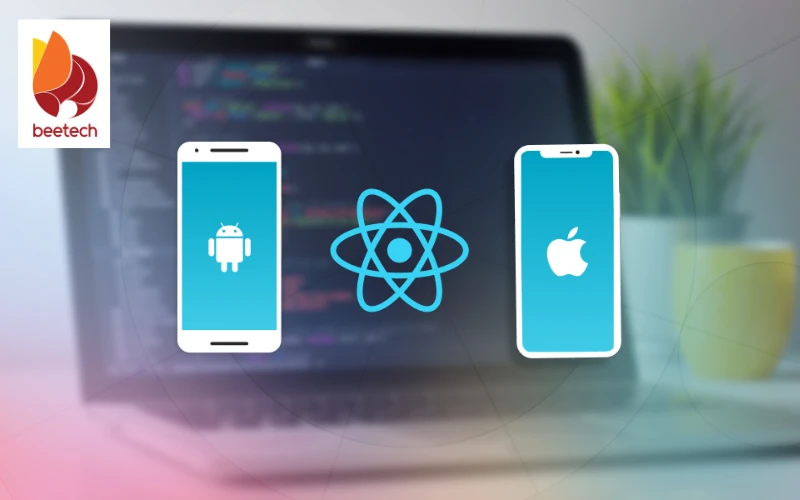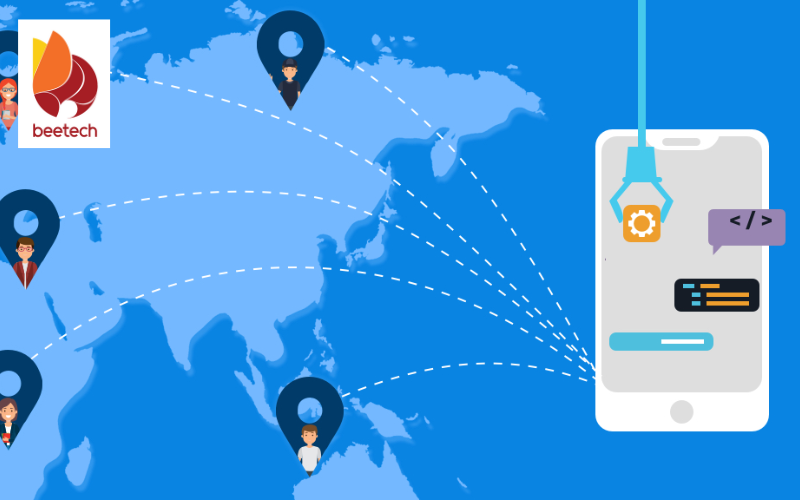iOS/Android Outsourcing Project Analysis with Experts
An outsourcing iOS/Android project can save costs, speed up development, and provide access to top talent. This guide explores key benefits, challenges, and expert insights to help you successfully manage your outsourced mobile app development.

1. Understanding iOS/Android outsourcing projects
1.1. What is outsourcing in mobile app development?
Outsourcing in mobile app development refers to the practice of hiring external teams or agencies to handle part or all of the development process for an iOS or Android project. Instead of building an in-house team, businesses collaborate with third-party developers who specialize in mobile technologies, UX/UI design, backend development, and app deployment.
Outsourcing can take several forms:
Full-cycle development: The outsourcing company handles everything from ideation to launch.
Dedicated teams: Businesses hire external developers, designers, and testers who work exclusively on their project.
Staff augmentation: Companies extend their in-house teams by hiring additional experts from an outsourcing partner.
Project-based outsourcing: Businesses outsource only specific tasks, such as UI design, API integration, or quality assurance.
1.2. Common reasons businesses outsource ios/android projects
Many companies choose to outsource their mobile app development due to several strategic advantages:
Cost savings – Hiring an in-house team can be expensive, requiring salaries, infrastructure, and ongoing training. Outsourcing provides access to skilled professionals at a lower cost, especially in regions with competitive rates.
Access to global talent – Outsourcing removes geographic limitations, allowing businesses to collaborate with experienced developers worldwide who specialize in iOS and Android development.
Faster time to market – An experienced outsourcing team already has established workflows, allowing for quicker development, testing, and deployment. This is crucial in competitive industries where speed is essential.
Focus on core business activities – By outsourcing development tasks, businesses can concentrate on marketing, strategy, and customer engagement rather than handling technical complexities.
Scalability & flexibility – Outsourcing allows companies to scale resources up or down based on project needs without long-term commitments.
2. Best practices for managing an ios/android outsourcing project

Managing an outsourced iOS/Android project effectively requires a structured approach to ensure smooth collaboration, high-quality output, and timely delivery. Without the right strategies, projects can suffer from miscommunication, delays, or even unexpected costs. Here is how to avoid common pitfalls and optimize your outsourcing experience.
2.1. Choosing the right outsourcing partner: key factors to consider
Finding the right outsourcing team is the foundation of a successful project. Start by evaluating their technical expertise - do they have experience with Swift, Kotlin, Flutter, or React Native? Check their past work, especially for projects similar to yours. A strong portfolio and client reviews can reveal their history of delivering quality results.
Transparency in pricing and contracts is equally important. Some outsourcing providers may offer lower upfront costs but add hidden fees later. Clarify the pricing structure from the beginning and choose a model that suits your needs, whether fixed-price, time & material, or a dedicated team approach.
Post-launch support is another key factor. A good outsourcing partner doesn’t just build the app - they help maintain and update it. Look for teams that provide bug fixes, security patches, and scalability improvements after deployment.
2.2. Setting clear requirements and expectations
A common reason for outsourcing failures is vague project requirements. To avoid this, clearly define your app’s scope, features, and objectives before development begins. A well-documented project scope helps developers understand exactly what you need and prevents costly revisions later.
Break the project into milestones and deadlines to track progress. For example, you might have separate deadlines for wireframing, prototype testing, MVP release, and final launch. Using Agile methodologies can also help teams work in iterative cycles, ensuring flexibility for improvements along the way.
Documentation is key - everything from technical specifications to brand guidelines should be well-documented to avoid misunderstandings. Additionally, ensure that legal agreements like NDAs and IP protection are in place to secure your app idea.
2.3. Effective communication strategies for seamless collaboration
When working with an outsourced team, clear communication is essential. Define preferred communication channels - whether it is Slack for daily chats, Zoom for weekly calls, or Jira for tracking tasks. Regular updates keep both sides aligned and prevent surprises.
Time zone differences can be a challenge, especially if your outsourcing partner is overseas. Set overlapping work hours or use asynchronous communication methods, such as recorded video updates or detailed email reports.
Encouraging feedback loops is another way to improve efficiency. Instead of waiting until the end of the project to review work, conduct frequent code reviews, sprint retrospectives, and user testing. This minimizes last-minute changes and ensures the app evolves in the right direction.

2.4. Quality assurance and post-launch support
Even a well-developed app can fail if it has not been tested properly. Quality assurance (QA) should cover functional testing, UI/UX testing, security assessments, and performance optimization. Mobile apps must work across different devices, screen sizes, and operating system versions, so thorough testing is non-negotiable.
Once the app is live, post-launch support is crucial for long-term success. Bugs, performance issues, and security vulnerabilities can appear over time, so ongoing monitoring, updates, and feature enhancements are necessary.
3. Conclusion
Above, we have analyzed key aspects of iOS/Android outsourcing projects, from best practices to common challenges and how to overcome them. You can read through, take notes, and apply these insights to make better outsourcing decisions. If you are looking for more in-depth content on IT outsourcing and mobile app development, keep following BeetechSoft for expert insights and industry updates!
